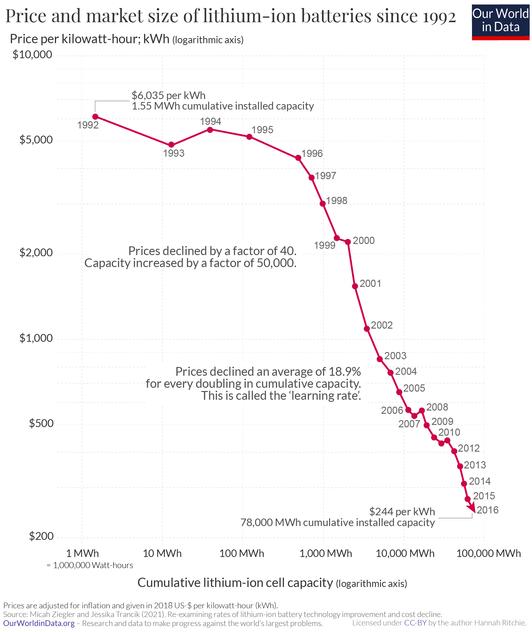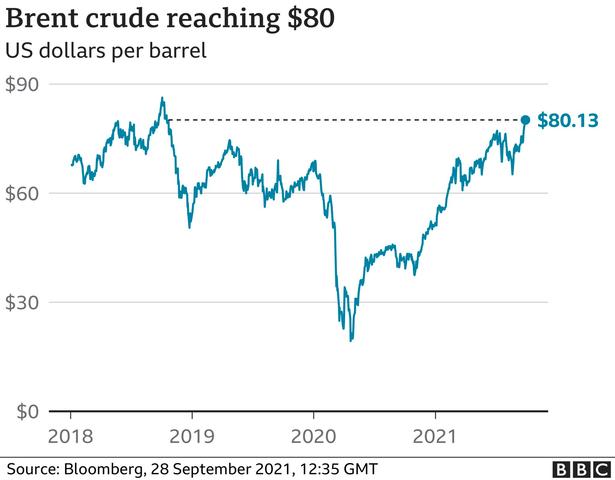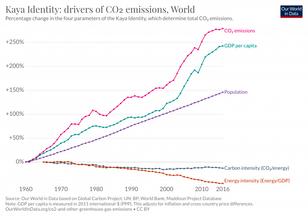
8 minute read
ARE BATTERY-ELECTRIC CARS REALLY THE FUTURE OF AUTOMOBILES?
WRITTEN BY AARON C
In July 2017, the UK government proposed a ban on the sale of new petrol and diesel cars in 2040 Following this, in February 2019, former prime minister Boris Johnson announced that the sale of new petrol and diesel cars would be brought forward to 2035, saying that it would happen even sooner if a “faster transition is feasible”. He also confirmed that this would include the sale of hybrid and plug-in hybrid vehicles too. Ever since, the UK has been tightening the time limit for the ban, with the ban on internal combustion engine (ICE) cars set to be introduced in 2030, and the ban on hybrids in 2035.
Additionally, many other countries around the world are trying to implement these bans too. In 2018, Denmark put forward an EUwide prohibition for petrol and diesel cars, but this was rejected due to it being contrary to the EU’s rules. A year later, in October 2019, they presented a phase-out of fossil fuel vehicles by 2030, which was supported by ten other EU states This was later changed to 2035 due to Germany refusing to agree to the ban. Currently, over forty countries have proposed 100% bans of ICE cars from as early as 2029 to 2050.
However, these proposed bans raise many questions For example: Why are the bans necessary?
These bans are being implemented to decrease greenhouse gas emissions, to prevent the effects of global warming, climate change and air pollution Furthermore, they are being implemented to increase sustainability.
This also raises the question of what will replace internal combustion cars
Major car manufacturers, such as VW have said that by 2033, all their new cars will be electric In addition, Toyota have said that they will have thirty different battery electric vehicles (BEVs) on offer by the end of the decade, and they aim to sell 3.5 million BEVs in 2030, an increase of around one million from last year, and approximately thirty-five percent of their yearly sales Despite these promises, upon further research, there are many obstacles that will face OEMs that attempt to do this This essay will explore the challenges that come with transitioning to a new form of energy, and any, more feasible, replacements for internal combustion cars.
Chapter 1: Battery Electric Vehicles
In recent years, the relevance of electric vehicles has increased dramatically With growing climate concern, and manufacturers such as Tesla becoming more popular, more people are aware of the changes that need to be made for a more sustainable world and are therefore more likely to purchase an electric vehicle. In 2021, global electric car sales increased by one hundred and ten percent, with most of the sales in China

Moreover, BEVs have benefits that make them a suitable replacement for internal combustion engine cars - they do not emit any greenhouse gases when running and they are already present in many countries around the world This means they are readily available worldwide, unlike other replacements
Where petrol and diesel cars gain energy from burning fuel, BEVs gain energy from a battery pack Electric cars today use battery packs that contain electrochemical cells, which as the name suggests, generate electrical energy from chemical reactions, and vice versa The most common of these are lithium-ion battery packs It appears that these will become even more common in years to follow, as over the last three decades, prices of lithium-ion batteries have decreased by ninety-seven percent
However, this is where problems arise
The largest lithium reserves in the world are in Chile and Argentina, and extracting lithium causes large amounts of air pollution and soil degradation Not only this, but the UK, US and China use natural gas and coal to generate a large proportion of their energy Though BEVs do not emit any carbon whilst running, the energy used to recharge the battery does. Another problem they face is a lack of infrastructure Even in countries where electric cars are most popular, there are not enough charging points to make long journeys, especially since electric cars have much shorter ranges at full capacity compared to an ICE car, due to the batteries being much less energy-dense than petrol or diesel.
Currently, the world is not prepared for a global transition to electric cars So instead, are there any other solutions that would be more practical, more cost-effective and easier to implement than BEVs?

Chapter 2: Hydrogen Fuel Cell
Despite being much less popular than BEVs, hydrogen fuel cells have still been prominent among car manufacturers as an alternative to ICE cars The most notable of these cars is the Toyota Mirai, which was first produced in 2015 Hydrogen fuel cells work by using the chemical energy from hydrogen to efficiently generate electricity Since hydrogen and air are the fuels, the products are electricity, heat, and water. This means they achieve the same goal as batteries in providing energy for transportation without emitting carbon while in use From a practicality standpoint, hydrogen fuel cells can also be seen as the superior energy source Hydrogen fuel cells have remarkably high energy-densities, and some can be even more energy-dense than standard combustion engines
Therefore, they can run for longer with the need for refuelling Even when refuelling, hydrogen fuel cells have the over lithium-ion batteries Filling up a hydrogen tank is very similar to filling t tank of a combustion engine car, so it a similar amount of time Compared to BEV, which can take several hours to recharge the battery, hydrogen cars ha the obvious advantage.
So, why were batteries chosen instead
Overall, hydrogen fuel cells face the sa problems as batteries Hydrogen fuel c suffer from using fossil fuels to obtain t necessary resources Hydrogen is one the most abundant elements on earth, it is normally bonded to another eleme and it must be isolated to be used for cells One way of doing this is through reforming, but this emits carbon dioxid which completely negates the fact that emits no greenhouse gases when runn Like BEVs, building the necessary infrastructure would require a massive investment Therefore, it would be mu more cost-effective to develop a green way to extract lithium instead, because the
Chapter 3: Biofuel
Whilst being a much lesser-known alternative to fossil fuels, biofuels could prove to be a highly effective way of generating clean electricity without having to rebuild the world’s infrastructure
Biofuels are made over a short period of time from biomass, such as agricultural, domestic, or industrial biowaste There are two main types of biofuels: bioethanol and biodiesel Bioethanol is produced in the US, whereas biodiesel is mostly produced in the EU
Bioethanol is the most produced and used biofuel It is an alcohol made through fermentation of carbohydrates from sugar and starch crops. It can be used for vehicles in its pure form (E100); however, it is normally added to petrol to reduce harmful emissions In addition, E10 fuel (ten percent ethanol) is currently being used in Formula One, which is an incredibly effective way for new automotive technology to reach the road, having already been the testbed for semiautomatic gearboxes and adaptive suspension. On the other hand, biodiesel is produced from oily or fatty plants. Similarly, in its pure form (B100) it can be used to fuel vehicles but is mostly used to reduce levels of carbon monoxide and hydrocarbons in vehicles, by adding it to diesel
The main advantage that biofuels have over fossil fuels is that they are mostly carbon neutral. In other words, most of the carbon that they emit was originally taken from the atmosphere anyway, by the plant, in the process of photosynthesis The advantage they have over electric cars is that they do not require as much adaptation to work around the world, as biofuels can be adapted to work in current ICE vehicles, and petrol stations only need to fill their tanks with biofuel rather than with petrol or diesel
Conversely, sourcing biofuel from agriculture can contribute to deforestation, as trees must be chopped down for fertile soil to plant these crops on This also reduces biodiversity, because only one type of plant is being grown there They also have an extremely high production cost, and do not actually reverse or stop climate change Since they still produce greenhouse gases (GHGs), they can only serve to slow down global warming and climate change rather than prevent it completely

Overall, biofuels cannot serve as a replacement for fossil fuels, due to their high cost and their inability to put an end to climate change But if all proposed alternatives have fatal drawbacks, what if we changed nothing at all?

Chapter 4: Fossil Fuels
For over two hundred years, since the industrial revolution, humans have relied on fossil fuels for transportation, heating, and electricity generation Yet, only in the last twenty to fifty years have we become aware of the problems they cause, and the threat that they pose to humanity.

It is predicted that we will run out of crude oil from 2040-2050, however some believe it may last longer because there are new reserves yet to be discovered Currently, there is an estimated 1 4 billion cars on the road around the world, of which the vast majority run on fossil fuels More cars are being bought every year, so this number is still expected to rise.
Petrol and diesel are produced from crude oil through a process called fractional distillation, which involves separating crude oil into its different hydrocarbons by using their different boiling points The process of fractional distillation does not negatively affect the environment on its own, but refining crude oil can release harmful chemicals into the atmosphere Recently, the motor vehicle economy has developed dramatically, and vehicles have been produced and used more This has contributed to increasing the amount of carbon emissions from cars Petrol and diesel emit carbon when they are burnt, which releases the hydrocarbons that become trapped in them over the time, into the atmosphere Along with other chemicals in the atmosphere, these emissions also cause air pollution. Air pollution has also become a major public health concern in China, where the most cars are sold every year Cars account for approximately 30% of global carbon emissions
However, since 2020, the price of oil has significantly increased, and in some countries, such as the UK, petrol and diesel cars have higher tax rates than hybrid or electric cars. This may make owning a petrol car so expensive, that people will be persuaded to purchase an electric car, and global emissions will decrease

Conclusion
Unfortunately, utilising the current technology, all the solutions to making cars more environmentally friendly or sustainable involve emitting carbon at some point in their lifespan, whether it be during their production or while they are being used However, this technology is bound to improve over time, and countries and manufacturers alike are committed to making it happen Additionally, whilst global carbon emissions have increased every year, annual emissions in the UK alone have decreased.
Overall, it is possible that Europe, North America and parts of Oceania could transition to mostly using electric vehicles for transportation, but it is highly unlikely that this will happen in the rest of the world too
In conclusion, BEVs are likely to continue to grow in sales in future years, but they are not the future of automobiles, because it would be very costly to implement globally and they still greatly contribute to worldwide air pollution and climate change
This statistic suggests that for developed countries, such as European or North American nation, electric car sales are growing, and could eventually become the norm for these regions. However, most cars are sold in Asia, which produces the most carbon of any continent annually, especially in China, due to their rapidly expanding industrial economy










